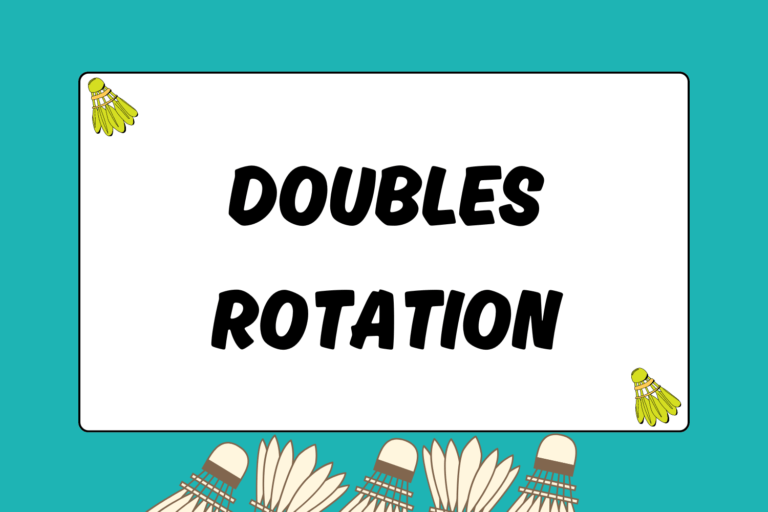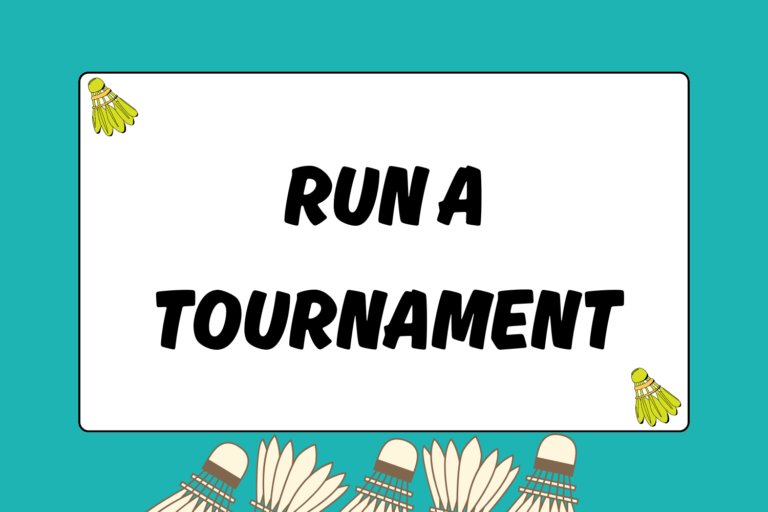Specializing in one event certainly feeds your competitive side, but your fun side is probably screaming for some variety. Playing in multiple events is a great way to keep badminton both fun and challenging, but for some, it may feel a bit overwhelming.
In this guide, you’ll learn what to expect as you transition from one event to another.
Singles to Doubles
Going from singles to doubles is not a difficult transition skill-wise, but it can be problematic in regard to strategy. Many players opt to switch from singles to doubles looking for something faster and slightly more complex.
The list below shows a few differences singles players should prepare for when playing doubles:
Tempo change
With twice any many players on the court, expect a quick-paced game with less clearing and more smashing.
Shot placement
While you’ll still be utilizing the four corners of the court, the middle now becomes a viable option. Opponents in a defensive position are vulnerable to shots down the middle.
Doubles rotation
While your footwork will carry over, you will need to learn doubles rotation in order to move effectively. The basics of rotation are pretty universal, but you’ll have to fine-tune the details with your partner.
Singles to Mixed Doubles
This transition may be the hardest of the two, based simply on the change in mindset. Mixed players need to have a more aggressive mindset because mixed is a more offense-oriented event. Below are some key points to focus on when you make the switch:
Aggressive mindset
While singles can be a grind, mixed doubles relies on fast, aggressive play. This means clears become less effective while drives and smashes are more effective.
Faster drops
In singles, you can sometimes get away with slower, looping drops, but mixed does not allow for this at all. Any slow drops will allow the opposing female player in the front to reach the shuttle and potentially make a rally-ending shot.
Lateral movements
In a traditional mixed formation, you and your partner will mostly move laterally. Staying low as you move your feet helps you maintain better balance during these lateral movements.
Doubles to Singles
The transition to singles is never an easy path for doubles players. Not only are the skill sets completely different, but singles requires different conditioning as well.
The short list below will give you an idea of what you’ll need to work on to make your transition go smoothly:
Physical conditioning
Although the singles court is smaller, you’ll have to cover the entire area by yourself. Be prepared to move around the court a whole lot more. Also, you won’t get any time to rest during rallies like you would during doubles.
Footwork
Doubles players can sometimes get away with poor footwork because there is less court space to cover. In singles, however, any footwork issues you have will become apparent. You will need smooth, efficient footwork if you wish to be competitive in singles.
Adjust to court size
Virtually every doubles player initially struggles with the difference in court size. With the alleys off-limits in singles, your typically great doubles shots will now become obsolete.
Shot placement
Hitting down the middle is usually a viable option in doubles, but that’s not the case in singles. A shot down the middle will head directly at the waiting opponent, making it an easy return. Utilize the four corners of the court and stay away from the middle.
Hot Tip: Give Every Event a Chance
You may be overwhelmed or uncomfortable playing a new event for the first time, but give it a fair chance. The transition is never easy, and like with everything new, there’s a learning curve.
Find a partner to play with or against to help introduce you to the different events. The transition will be easier with someone helping you along the way.
Doubles to Mixed Doubles
The biggest changes from doubles to mixed revolve around service. Although the change is subtle, it’s significant because of the attacking nature in mixed. The following points will highlight some of the key changes from doubles to mixed doubles:
Service
Playing a traditional mixed style will force the male partner to serve a little further out, which forces the male opponent further out as well. This is a result of the male needing to cover the back half of the court after service. Keep this in mind as you take your serve.
Serve return
Related to the previous point, serve returns should be largely influenced by the player from whom you take service. A male server will be serving further back, meaning you’ll be able to attack his serve more aggressively because of the longer time it takes. A female server will be serving from a typical doubles service position.
Push opponents out of position
Unlike doubles, mixed players have more defined roles and responsibilities. For a traditional mixed team, the female should be covering the front half of the court while the male covers the back half.
Take advantage of this any time there’s an opportunity to push the female opponent back and pull the male forward. This can be done simply by flick-serving to the female and short-serving to the male.
Mixed Doubles to Singles
Like doubles players, mixed players tend to have inadequate footwork for singles. The type and amount of movement on the court take a while to adjust to. Using the tips below will prepare you for the transition:
Practice footwork
Work on becoming fast and efficient with your footwork. The easier you can move around the court, the easier singles will be for you.
Placement over power
Mixed doubles is a balance between power and finesse, but singles relies heavily on placement. Utilize the four corners while keeping your drops tight, and your clears deep.
Clear more
Clearing is a staple shot in mixed doubles; failing to use it in singles will only hurt you. Don’t be afraid to clear — just make sure they are quality clears because you want to move your opponent around.
Mixed Doubles to Doubles
This is probably the easiest of all the transitions because the strategies and mindset in mixed can be directly applied to doubles. There are, however, some differences worth noting:
Rotation
Whatever the rotation scheme (if any) you used in mixed will likely differ from your doubles rotation. Learn the basics of doubles rotation and tweak them to suit your partner’s style.
Shot placement
Fortunately, mixed players have a wider range of places to aim for in doubles. When your opponents are in a defensive position, you may use the four corners and any shot along the center line. When your opponents are in an offensive position, use your mixed doubles shot selection.
Pick on the weaker partner
This is a viable strategy in mixed as well, but it may not be as apparent in doubles. No matter how evenly skilled your opponents may seem, there will always be an inferior partner. Find that player and wear him or her down.
Multiple Events, Multiple Skills
Playing all three events may seem difficult at first, but it can be beneficial for your badminton game. Certain events call for certain strategies and techniques, but that doesn’t mean all strategies are mutually exclusive. Every situation calls for a certain response and many unique ones will present themselves throughout the match.
By playing in every event, you’ll gain experience that will better prepare you to handle a wide variety of situations. You may find that playing multiple events is more fun than you expected!





